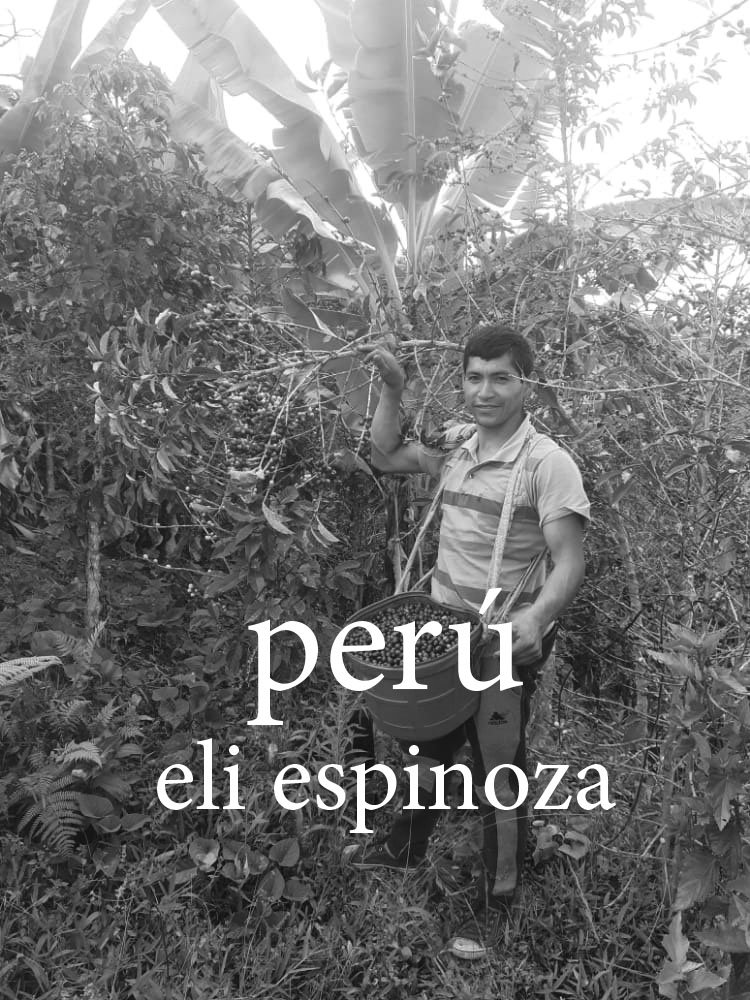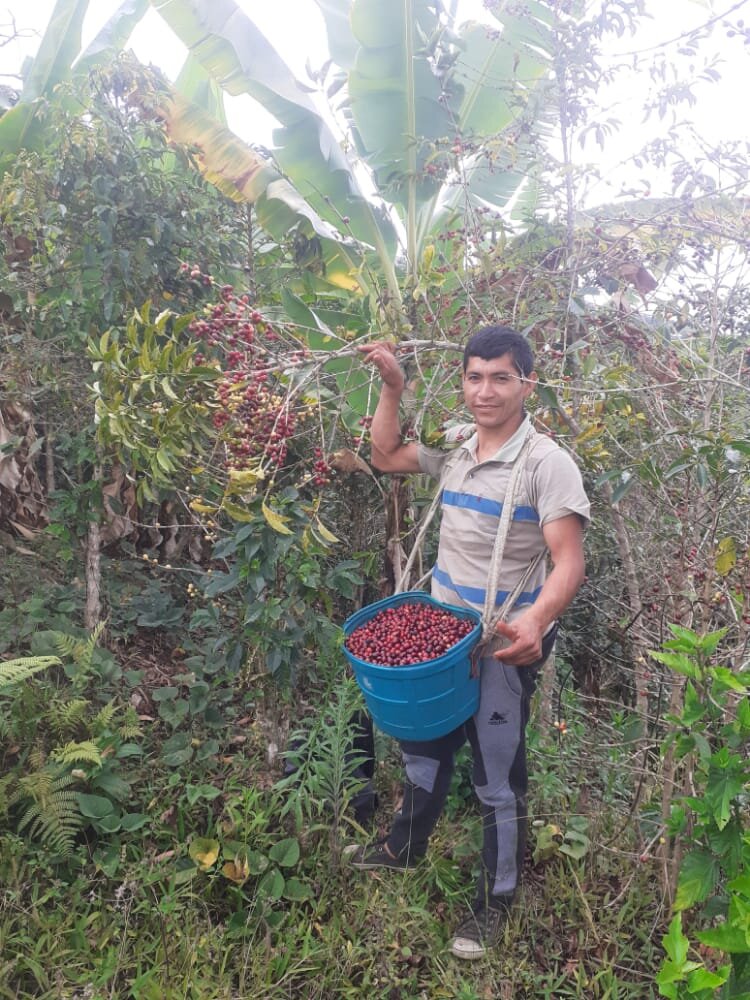Guatemala La Esperanza Organic






Guatemala La Esperanza Organic
Lot Name: La Esperanza Organic
Producer and/or Farm: Los Volcanes
Location (country, region): Guatemala, Antigua, Sacatepequez
Harvest (months): May
Altitude (meters above sea level): +1,500 mts.
Varietal: Borbon, Villa Sarchi, Icatu, Catucai and Obata
Soil Type: Clay
Processing: Washed
Drying: Patio
Grade: Organic
Taste Profile/Cupping Notes:
Chocolate, melon, white grape, marshmallow, stevia
Finca La Esperanza in Antigua Guatemala was the first farm Josué and LVC designed. This is a farm in which everything is a study of something. When they first came to the farm in 2012 it was a sandbox, the soil was bare and nothing would grow, not even weeds. The coffee trees had been deeply affected by the leaf rust and it was the moment to renovate. Their first decision was to choose what variety to plant. The Villa Sarchi came as an alternative to the traditional Borbón because it was rust tolerant, not resistant, which meant that it did not contain genetic elements that could limit aspects of taste. On the contrary, being a shorter growing shrub and not a producer of large volumes it promised the potential for quality.
La Esperanza is flat, which is an advantage in a country where most coffee grows on steep slopes of mountains and volcanoes. The farm was divided into four identical quadrants in size but not in design. Each quadrant was planted in 2014 with the same variety to study the effects of the variations.Each quadrant has a different coffee tree density, which means spacing between trees and rows is different in each sector of the farm. With the lowest density at 2300 plants per hectare and the highest density at 4300. There's also a marked difference in the density of shade trees. The more coffee plants, the less shade trees and vice versa. The idea of the four quadrants was to make it a study of nutrition in correlation to cherry density and cup quality. Each quadrant had a specific dose of different products being utilized, from very traditional agriculture to organic.
Journal from Los Volcanes:
The first two years of harvest were a dream. With two low yielding harvest that presented important points of data about the program, but most importantly rendering an exceptional cup quality. Year three promised a big harvest that was interrupted on the 17th of January of 2017 when we experienced the first frost in the last thirty years in the region of Antigua. The farm was deeply affected and compromised, entire patches of the farm had coffee trees burnt with the frost, and almost all of the harvest dried overnight on the trees. After careful deliberations with technicians and fellow producers I decided to go in a direction completely different to the norm. Through the work in our organic quadrant Josué had already been able to observe a completely different behavior to the one in the rest of the farm. There was an opportunity to test the idea about regenerating the soil based on the premise of creating the conditions for an equilibrium to exist among the many microorganisms present in the soil and the plants. The soil program was implemented in the rest of the farm, reverting from conventional agriculture to one completely based on the principles of reading the metabolism of the plant and its surface in alignment with the life present in the soil. By then we had been working with Andrew Timco in adapting the lessons from Elaine Ingham to the ingredients we could find in a coffee farm. Mainly to create a compost that was capable of growing a colony of benign micro organisms and at the same time providing a balanced set of nutritional elements. We were able to use the dry leaves that fell in the ground, the green leaves from the shade control, coffee pulp from our industrial process, parchment left from the exports, along with wood chips from stumping. Each thing contributed specific things like sugars, nitrogen, carbon, and for protein we slowly transitioned from animal manure to utilizing alfalfa that we could grow in the rows of the farm. The organic program that was implemented at La Esperanza completely recovered the surface of the farm along with its producing capabilities. Up to June 2018 the farm gained an impressive regrowth that presented the scenario for us to spread the knowledge around the country. Between 2017 and 2018 we brought to La Esperanza hundreds of producers from all over the country for workshops on how to build and apply the principles of the lessons we had learned. There wouldn't be a week in the year without a workshop happening. By 2019 we were covering with compost a total of three million coffee plants with the compost being produced at La Esperanza and nearly four million plants from the compost facility in Cobán. By mid 2019 we started facing another challenge derived from a combination of the eruption of the Fuego Volcano in 2018 and how actively our soil behaves. Josué hadn't taken into account the excess of phosphorus in our soil due to the twenty centimeters of ash that fell onthe farm during the prior year. Excess phosphorus blocks the plant's ability for iron intake called iron chlorosis which limits all the vital functions of photosynthesis. Our plants got sick, severely sick giving room to the works leaf rust outbreak we've had since the farm was re planted, and with it all sorts of problems. 2020 was our worst harvest by volume and quality. The challenge again allowed for lessons to be taken and with all thepatience we proceeded to increase the dose of nutrients to the soil, to keep a heavy shade compromising productivity in order to allow the plant to regenerate its leaf cover and root structure. Iron was administered via foliar form. The farm was once again healthy by the end of the year, yielding a small high quality harvest in 2021, leaving with it completely healthy trees in producing capability. We had a high yielding harvest in 2022 that won several awards: 3rd place in the National Organic Coffee Competition and 1st place in the Antiguan Regional Competition.
The Villa Sarchi will begin to be renovated in the upcoming years with a new series of varieties and a new approach to production from the lessons learned in the prior ten years. In this new chapter La Esperanza is and will continue to be the farm that suffers the most, and at the same time the farm that received our most personal and detailed attention. This is where the lessons are learned for anything that will be taught and implemented at any other of our farms, or of those producers that deliver to our programs. La Esperanza also produces Icatu, Catucai and Obatá that I brought from Brazil for the purpose of propagating the seeds. But perhaps the most important part of the whole story of this farm is the hectare that was left at the back end of the farm of the Borbones. These trees have been here for over one hundred years. They are old and rare and remained in the farm by happenstance after running out of resources in 2013 to renovate the area where they are. In the period between 2013 and 2019 this area was left to grow wild. Trees weren't managed, shade wasn't managed, we would only go into this space to harvest whatever these old trees wanted to produce. The results of the Borbón and how we learned to interact with it were special and exceedingly rare. One hundred years ago La Esperanza was part of another farm, our neighbor farm of El Pintado. Josué came to knock on our neighbor's door hoping to find more trees of this older kind. He found so much more at El Pintado, but most importantly, the willingness of a neighbor that had been the only organic certified farm in the region of Antigua during the past eighteen years, to believe in my program.









